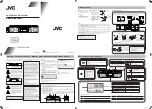
The four modes are as follows:
Mode
Use
Stabilizer (ST)
Used to hold wings level, or to perform manually-commanded left or right turns
by rotating the L/R TURN knob
Heading (HD)
Used to fly along a heading as selected by the heading bug on the directional
gyro. Since the autopilot is rate-based, it is possible to move the heading bug
to a new heading while the autopilot is engaged; the autopilot will command a
standard-rate turn to the new heading.
Low-sensitivity
course track
(LO TRK)
Used to fly along a navigation course selected by one of the NAV radio CDIs.
Use the AP NAV SELECT switch to select the NAV1 or NAV2 CDI for tracking.
Low sensitivity means the autopilot will ignore short term needle excursions
due to radio interference or VOR station passage. Maneuver the aircraft to a
heading within ±10º of the selected course with the CDI no more than one dot
deflected from center before engaging the autopilot in this mode.
High-sensitivity
course track
(HI TRK)
Also used to fly along a navigation course selected by one of the NAV radio
CDIs. High sensitivity means the autopilot will track with maximum authority
making this mode ideal for VOR or Localizer approaches but less so for VOR
tracking since the autopilot will track all needle excursions and may behave
badly during VOR station passage. Maneuver the aircraft to a heading within
±10º of the selected course with the CDI no more than one dot deflected from
center before engaging the autopilot in this mode.
Disengaging the Autopilot
The autopilot can be disengaged normally by any of the following three actions:
• Pressing the red AP DISC switch on the yoke
• Pressing and holding for three seconds the AP MODE SEL switch on the yoke
• Pressing and holding for three seconds the L/R TURN knob on the autopilot
bezel
The RDY light will flash rapidly for five seconds to indicate that the autopilot has disengaged.
In addition, a beeping audio alert issues while the RDY light flashes to call further attention to
the disengagement. However, in flight with a noise-canceling headset, the audio alert may
not be loud enough to be audible.
Using the AP MASTER switch to remove power from the autopilot will also disengage the roll
servo, but this should be considered only as an emergency procedure should the three
normal methods fail to disengage the autopilot.
Again, be sure to turn AP MASTER switch OFF before engine shutdown; the autopilot power
is not removed when the avionics master switch is turned off. It’s a good idea to add this as a
separate item on the shutdown checklist.
N6004H S-TEC Autopilot Reference
!
[ page 3 / 5 ]
!
cvk
1/29/13























